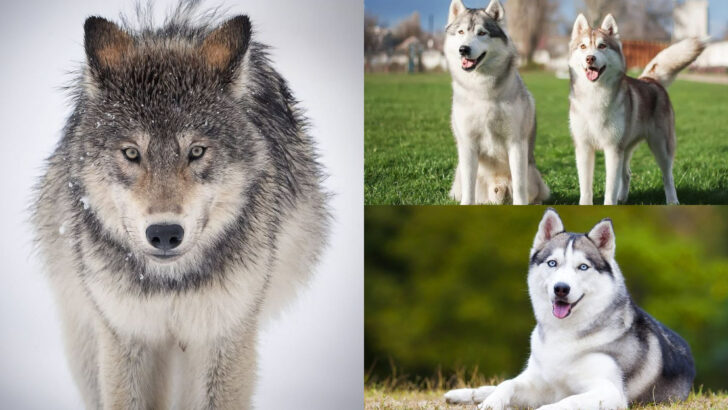A wolf and a husky might look like they walked out of the same wild winter tale, but don’t be fooled—one is a legendary predator, the other a loyal companion with a knack for pulling sleds. Wolves are the untamed rulers of the wilderness, built for the hunt, with instincts that have been sharpened over millennia.
Huskies, on the other hand, are social, hardworking, and—let’s be honest—sometimes too friendly for their own good. From their piercing eyes to their howling vocals, the similarities are striking.
But the differences? Those are what truly separate the apex predator from the domesticated workhorse.
So, what sets them apart? From their diet and body language to their pack mentality, here are the 12 biggest differences between wolves and huskies—explained in a way that’ll make you rethink everything you thought you knew about these incredible canines.
Size and Build
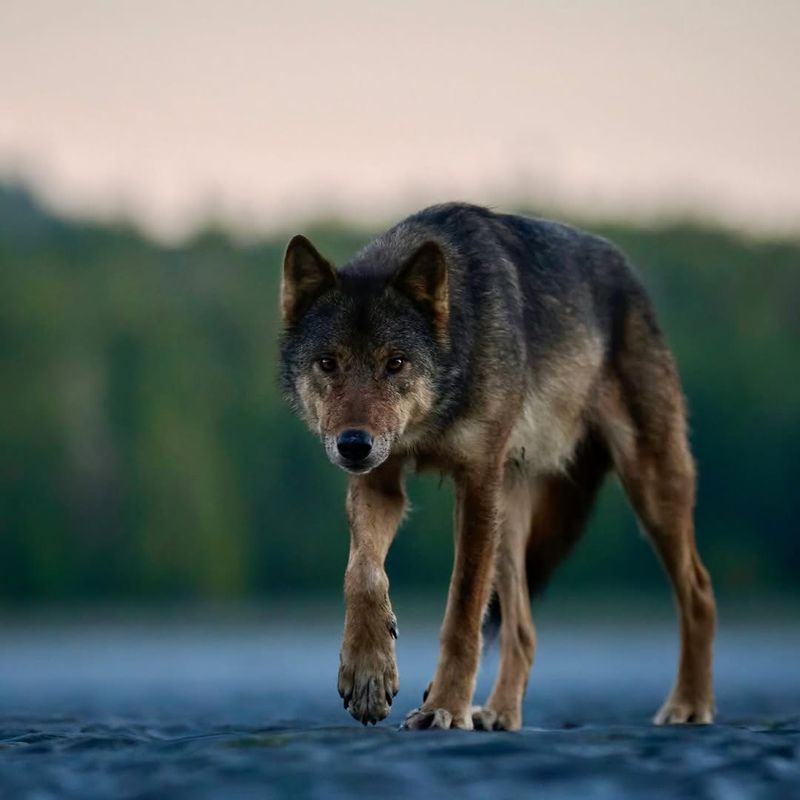
The difference in size is striking. Wolves, with their robust frames, can weigh up to 180 pounds, standing as tall as 33 inches at the shoulder.
Huskies, on the other hand, rarely exceed 60 pounds and stand around 23 inches tall. This size difference is partly a result of their distinct evolutionary paths.
Wolves evolved for hunting large prey, requiring immense strength and endurance. Huskies were bred for pulling sleds over long distances, favoring a leaner, agile build.
Observing these differences alters one’s perception of these magnificent creatures. Their physical divergence tells a story of adaptation and purpose.
Social Structure
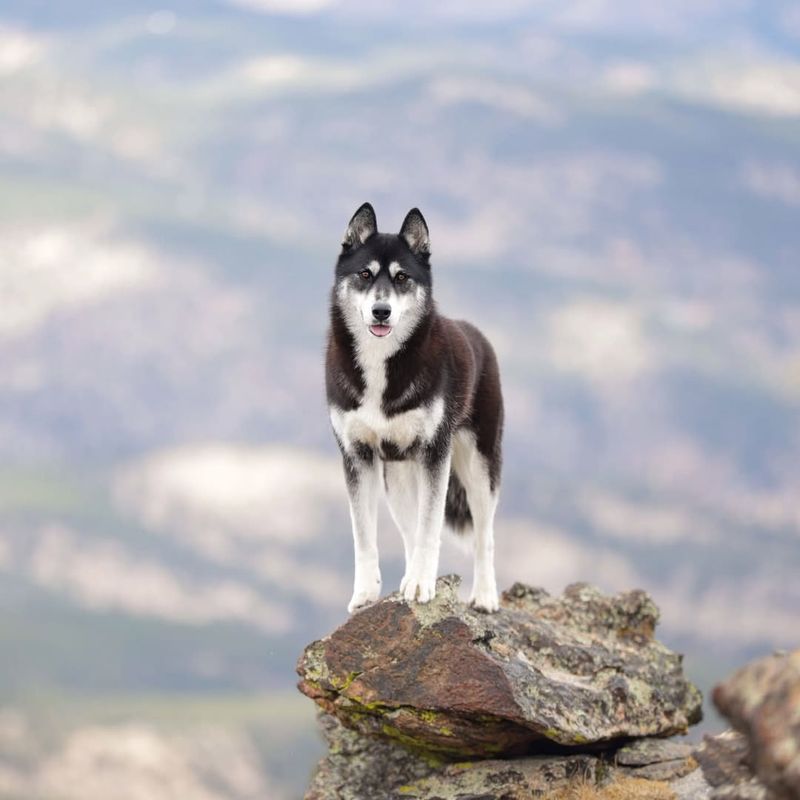
Wolves thrive within a complex social structure. Their packs are extended families, typically led by an alpha pair.
This hierarchy ensures survival, with each member playing a vital role. Huskies, conversely, were bred to work closely with humans, not just each other.
While they are social, they do not form packs in the wild. Instead, their social dynamic is more fluid, often changing based on human interaction.
Understanding these social differences highlights how adaptation shapes behavior. The unique pack dynamics of wolves contrast with the human-dependent social interactions of huskies.
Diet and Hunting
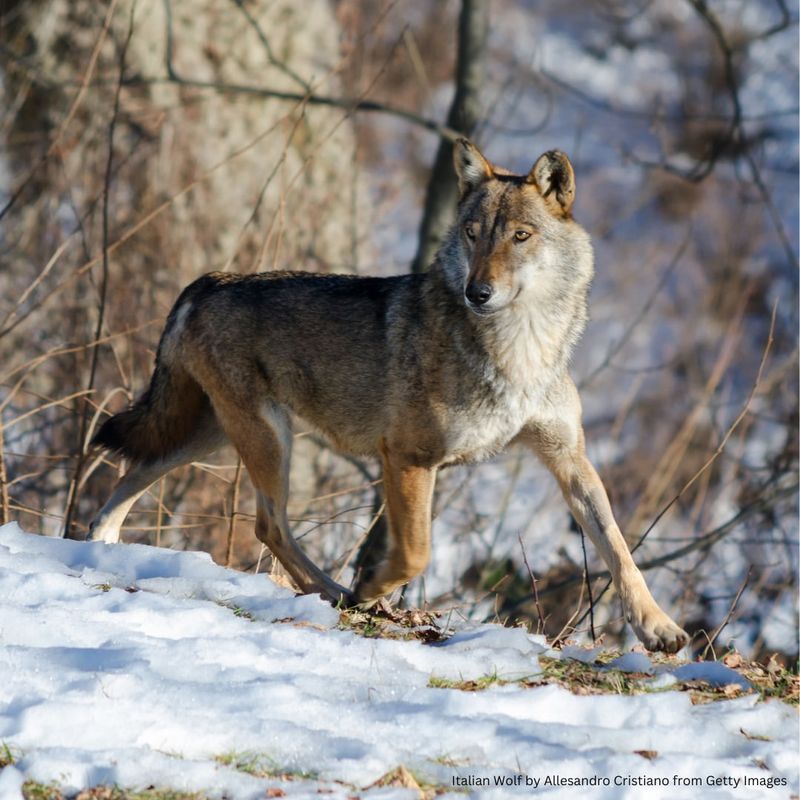
Wolves are apex predators, relying on hunting skills to capture prey. Their diet consists mainly of large mammals like deer and elk.
In contrast, huskies, as domesticated dogs, depend on humans for food, eating commercial dog food or leftovers. This distinction in diet reflects their differing lifestyles.
Wolves hunt in packs, showcasing teamwork and strategy. Huskies, however, do not require such skills for survival.
The dietary habits of each reveal much about their societal roles. For wolves, hunting is a communal effort, while for huskies, nourishment is human-provided, emphasizing dependency.
Vocalization
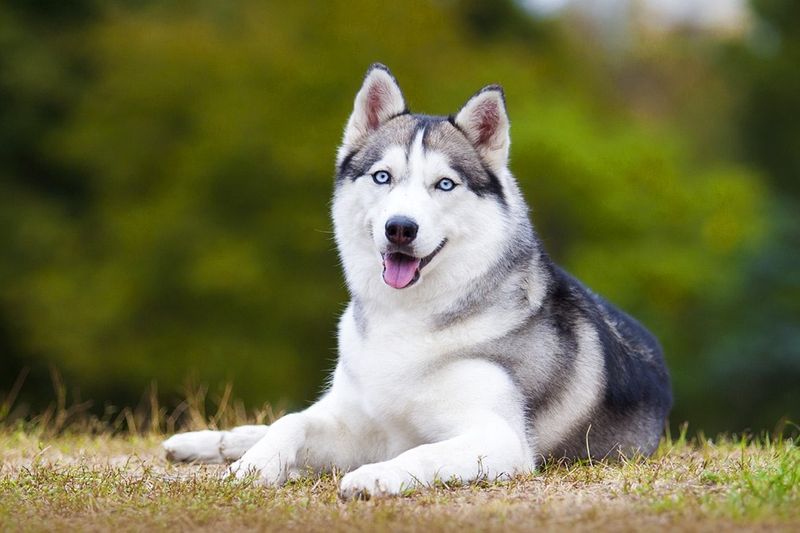
Wolves communicate through a series of vocalizations, including howls, growls, and whines. Each sound carries meaning, from coordinating pack hunts to signaling distress.
Huskies, with their domestic upbringing, also howl but more often for attention or amusement. Their vocalizations are less about survival and more about interaction.
The way these animals use sound underscores their life experiences. For wolves, vocalization is crucial for pack cohesion and survival.
Huskies, conversely, use their voices to engage with humans, reflecting their role as companions rather than wild hunters.
Fur and Coat
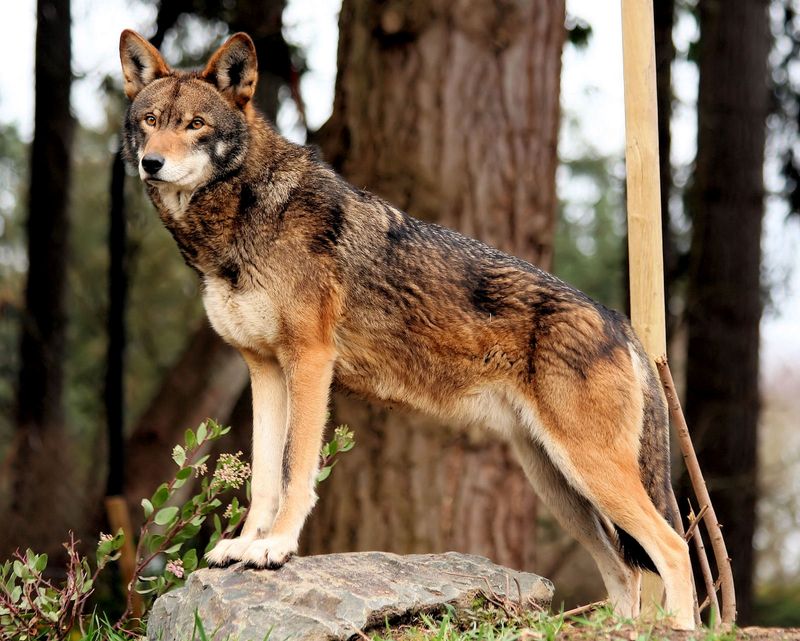
A wolf sports a coat designed for survival in harsh climates. Their dense, insulating fur keeps them warm during freezing winters.
Huskies, though well-equipped for cold weather, have a softer, more varied coat. This is due to selective breeding for aesthetic and functional purposes.
Understanding the differences in their coats provides insight into their lifestyles. Wolves need their thick fur for survival in the wild, where conditions are unpredictable.
Huskies, although bred for cold climates, benefit from human care, allowing for a more diverse range of coat textures and colors.
Reproductive Behavior
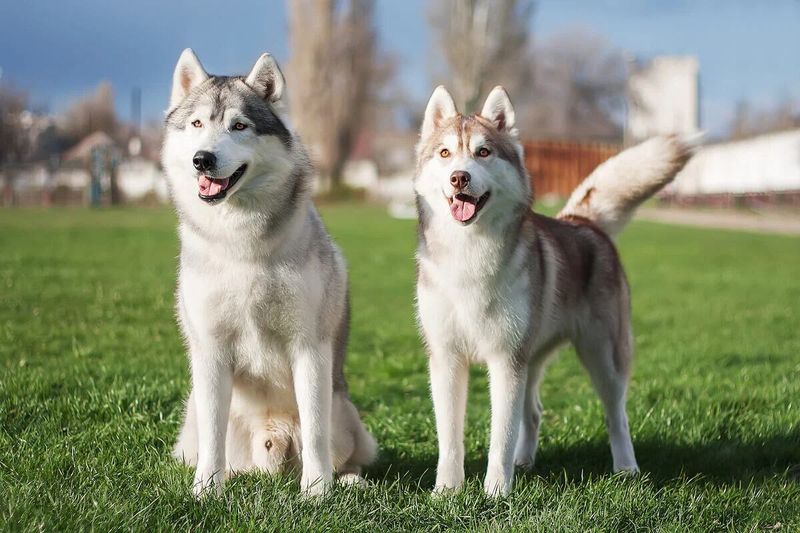
In the wild, only the alpha pair in a wolf pack typically mates, ensuring controlled population growth. This focused breeding strategy strengthens the pack.
Huskies, as domestic dogs, do not adhere to such strict breeding hierarchies. Breeding is often managed by humans, enabling a wider variety of pairings.
These contrasting reproductive behaviors highlight the effects of domestication. For wolves, mating is about preserving the pack’s health and success.
Huskies, however, reflect human preferences and intervention, leading to a broader gene pool and more diverse traits.
Territoriality
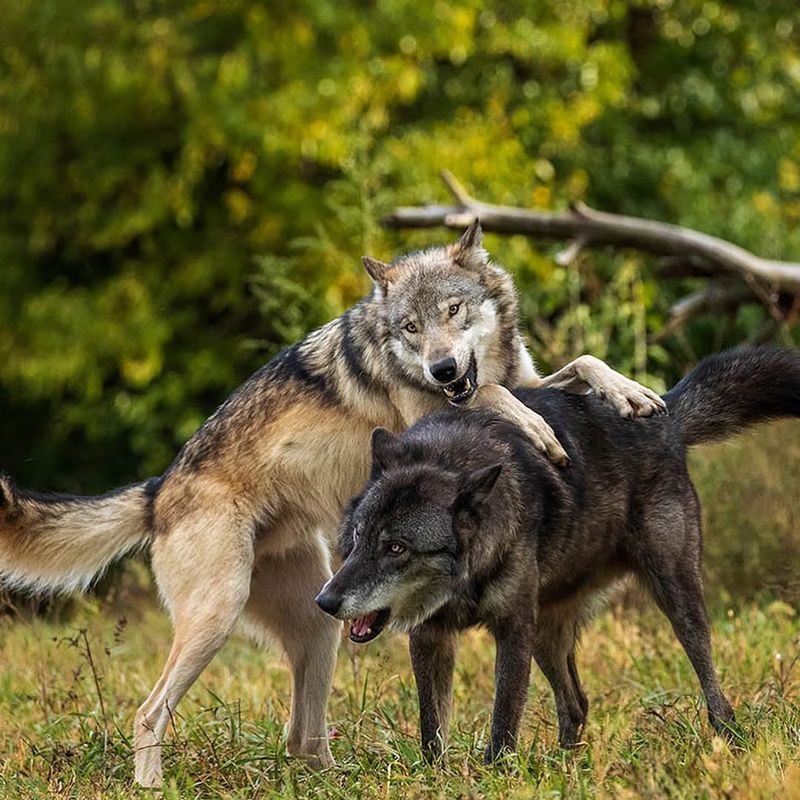
Wolves are fiercely territorial, marking boundaries to warn other packs. This behavior ensures access to food and safety.
In contrast, huskies, accustomed to human environments, show less territorial instinct. They might guard a home, but their sense of space is more flexible, influenced by human presence.
This distinction in territorial behavior reveals much about their domestic and wild natures. Wolves depend on territory for survival, while huskies, living alongside humans, adapt to shared spaces, reflecting their domesticated lifestyle.
Lifespan
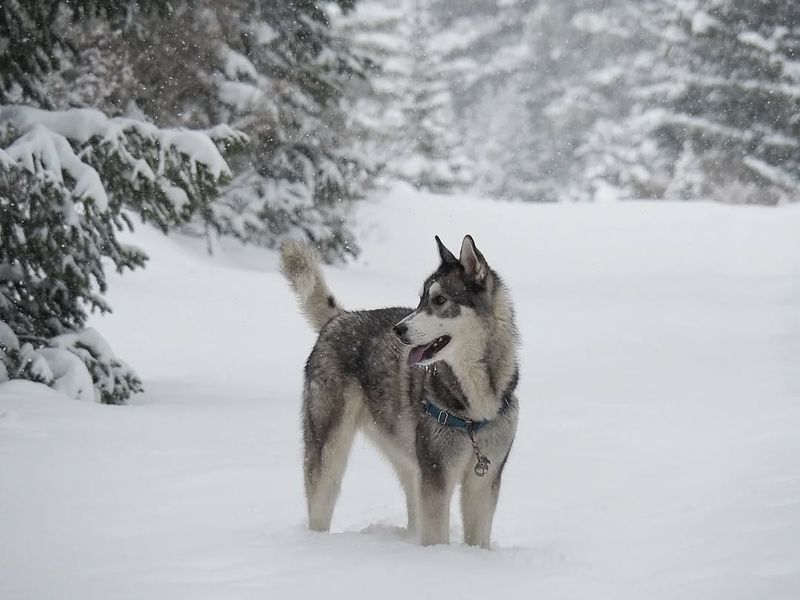
In the wild, wolves face numerous threats, leading to shorter lifespans, averaging six to eight years. Huskies, benefiting from veterinary care and a safe environment, can live 12 to 15 years.
The disparity in lifespan illustrates the impact of environment and care. Wolves contend with disease, competition, and hunting, factors that huskies are shielded from in domestic settings.
This difference in longevity highlights the challenges of wildlife versus domestic life. While wolves battle for survival daily, huskies enjoy the privileges of companionship and care, extending their years.
Genetic Differences
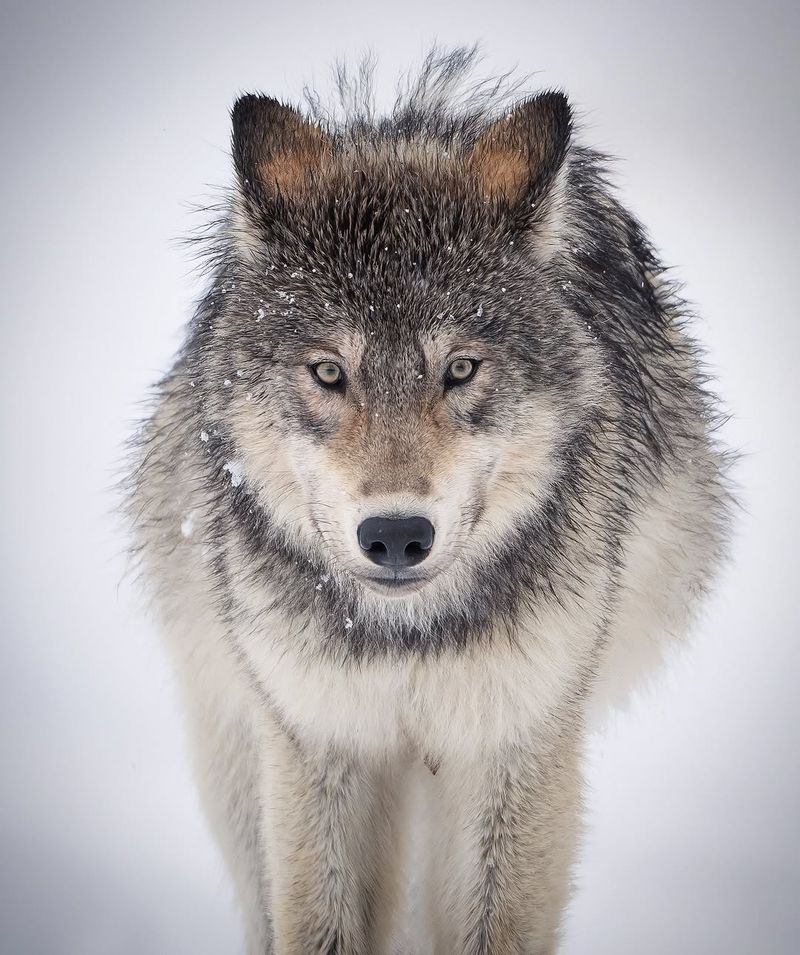
Though they share a common ancestor, wolves and huskies have evolved distinct genetic traits. Wolves maintain traits necessary for survival in the wild, such as heightened senses and endurance.
Huskies, selectively bred, exhibit traits for companionship and work. These genetic variations manifest in behavior, appearance, and adaptability.
Understanding these genetic differences sheds light on their unique evolutionary paths. Wolves’ genes favor survival instincts, while huskies’ genetics highlight human-influenced traits, showcasing how domestication alters species over time, crafting animals suited to human needs.
Adaptation to Climate

Wolves are highly adaptable to extreme climates, thriving in diverse habitats from deserts to tundra. Their adaptability is crucial for survival.
Huskies, bred for cold environments, display resilience but rely on human provision. They thrive in snowy conditions but are not as adaptable to heat.
This contrast in climate adaptation reveals the role of natural versus human-influenced evolution. Wolves’ ability to endure varied climates underscores their survival instincts.
Huskies, while equipped for cold, showcase the limitations of selective breeding, thriving best in environments they were specifically bred for.
Human Interaction
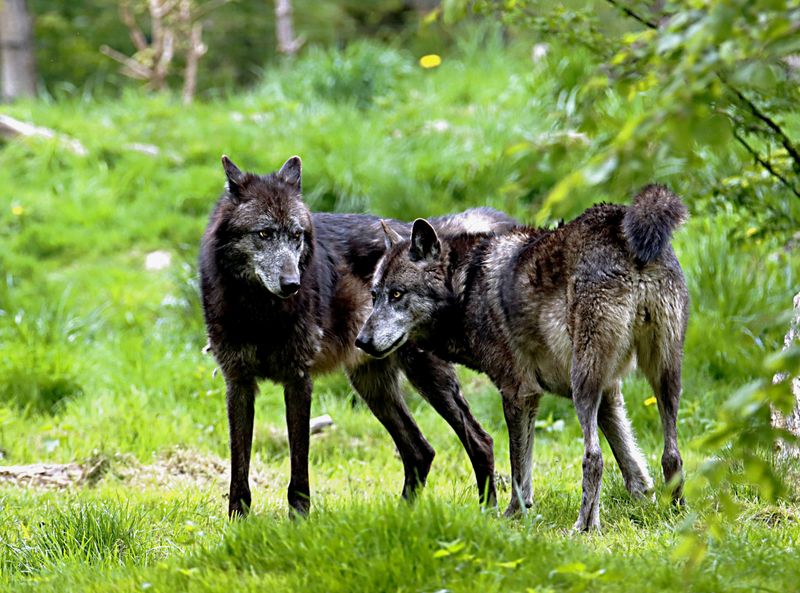
Wolves are naturally wary of humans, a wariness rooted in survival instincts. They avoid contact, viewing humans as threats.
Huskies, bred for companionship, thrive on human interaction, forming strong bonds with their owners. This difference in human interaction highlights domestication’s impact.
Wolves equate survival with avoidance, a stark contrast to the sociable nature of huskies. While wolves maintain distance, huskies seek connection, reflecting their roles in human lives as loyal and affectionate companions.
This divergence underscores the profound impact of domestication.
Energy Levels and Exercise
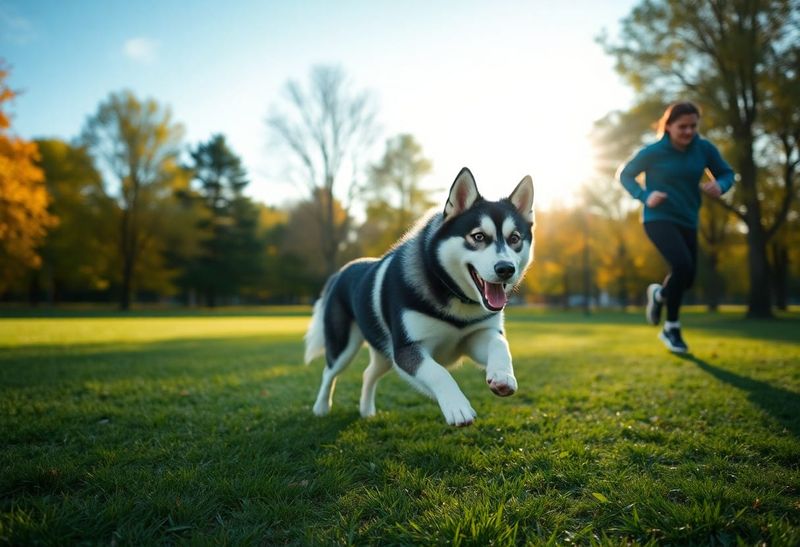
Wolves possess high energy levels, essential for hunting and territorial patrols. Their stamina enables them to cover vast distances in search of prey.
Huskies, though energetic, require structured exercise. They thrive on regular walks and play, but their energy is more focused and manageable compared to wolves.
This difference in energy and exercise needs stems from their lifestyles. Wolves channel energy into survival tasks, while huskies, relying on humans, enjoy activity as part of their companionship role.
This highlights adaptation, with each species’ energy tailored to its environment.

